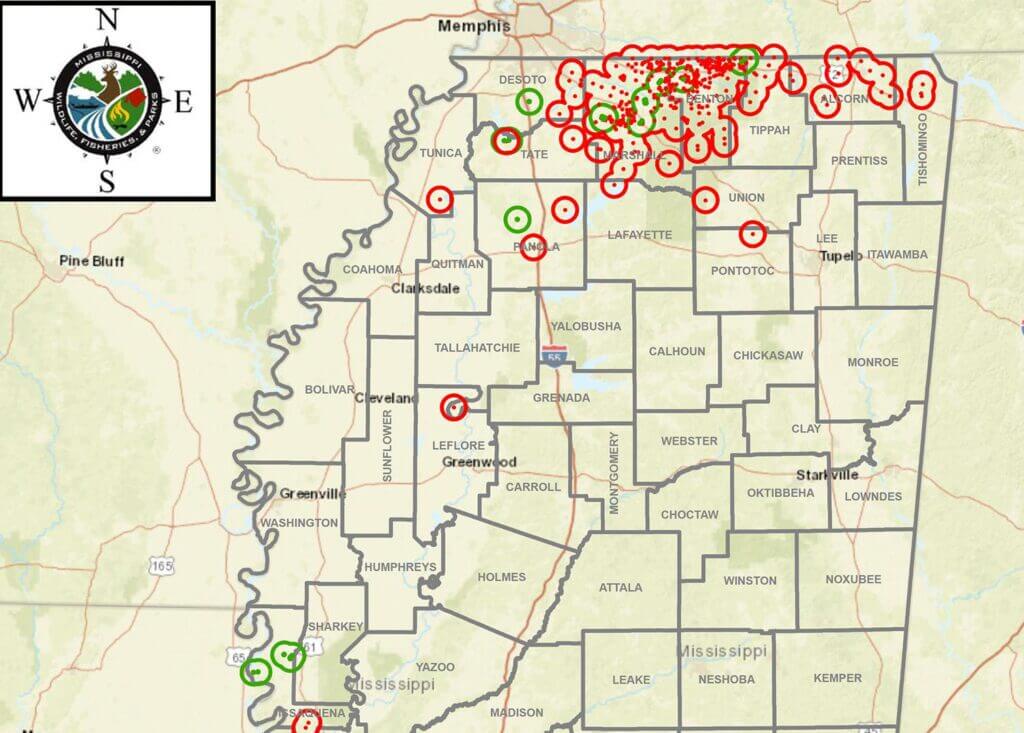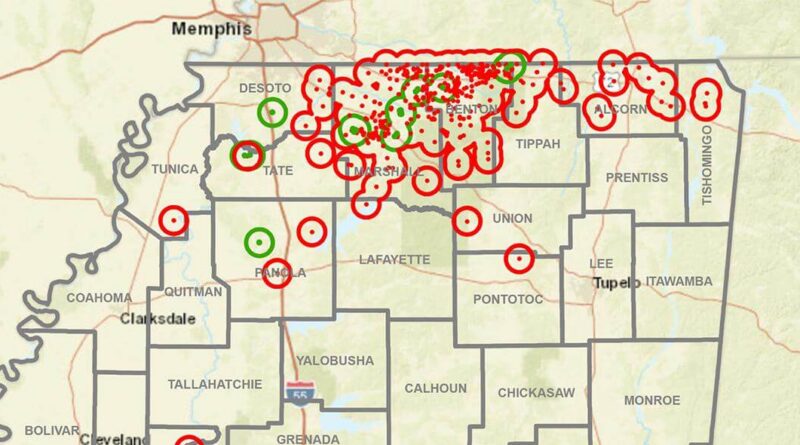Chronic Wasting Disease cases rise in Mississippi
Aug. 7, 2025 – Chronic wasting disease (CWD) continues to spread in Mississippi’s deer population, with state wildlife officials reporting an increase in confirmed cases over the past year.
From July 2024 to June 2025, the Mississippi Department of Wildlife, Fisheries, and Parks (MDWFP) confirmed 128 CWD-positive deer, up from 110 cases during the previous year. Since testing began in July 2018, MDWFP has screened more than 58,800 deer, with 446 testing positive for the fatal disease. Mississippi’s deer herd is estimated at 1.75 million, with roughly 270,000 harvested annually.
Union County was added to the growing list of affected areas in 2025, bringing the total number of counties with confirmed CWD to 18, most concentrated in Benton, Marshall, and other northern counties, as well as parts of the lower Delta.

“The highest prevalence area is in Benton and Marshall counties along the Tennessee line,” said Jacob Dykes, wildlife specialist with the Mississippi State University Extension Service. “This is part of a larger regional outbreak covering multiple states.”
What is CWD and Why It Matters
CWD is a 100% fatal prion disease affecting deer, elk, and moose. It spreads through saliva, urine, feces, and contaminated environments, and while it has never been shown to infect humans, the CDC advises against eating meat from infected animals. Deer often show no symptoms until the disease’s final stages, making testing critical.
Testing and Prevention Efforts
MDWFP encourages hunters to submit deer heads for free CWD testing through drop-off freezer sites and participating taxidermists. Results are typically available within two to three weeks.
“Deer density is directly related to transmission,” said Kamen Campbell, MDWFP assistant deer program coordinator. “Harvesting more deer—especially bucks—reduces infection rates and helps remove positive deer from the landscape.”
Wildlife experts recommend:
- Avoiding supplemental feeding or mineral licks, which increase deer congregation and disease spread.
- Increasing buck harvest and maintaining an adequate doe harvest to manage deer density.
- Limiting carcass movement from CWD-positive areas to reduce geographic spread.
Targeted Management Zones
Hunters within three miles of a CWD detection can participate in the CWD Deer Management Assistance Program (DMAP), allowing unlimited harvest of either sex during any open season with no weapon restrictions. Deer taken under DMAP are tested for CWD and do not count toward bag limits.
“This program focuses on early detection, targeted harvest, and limiting spread,” Campbell said. “Early, proactive management has shown potential to keep prevalence low in certain areas.”
Staying Ahead of the Spread
Even in areas with no confirmed cases, MDWFP urges hunters and landowners to take preventive steps, as CWD can exist undetected for years.
“The disease is always beyond the farthest known location,” Campbell warned. “Stopping feeding and limiting carcass movement can make a difference before the disease becomes established.”
For more details on CWD testing locations and prevention measures, visit the MDWFP Chronic Wasting Disease page.





